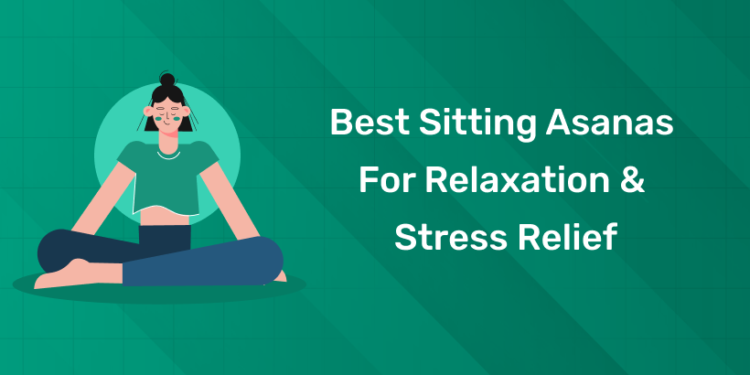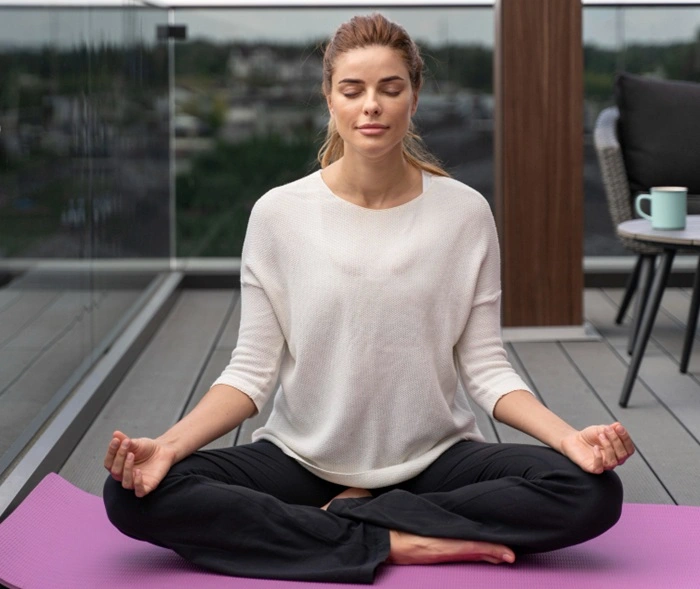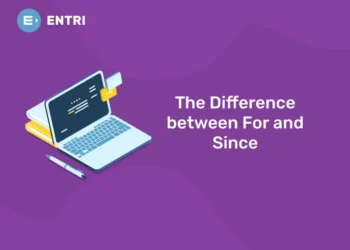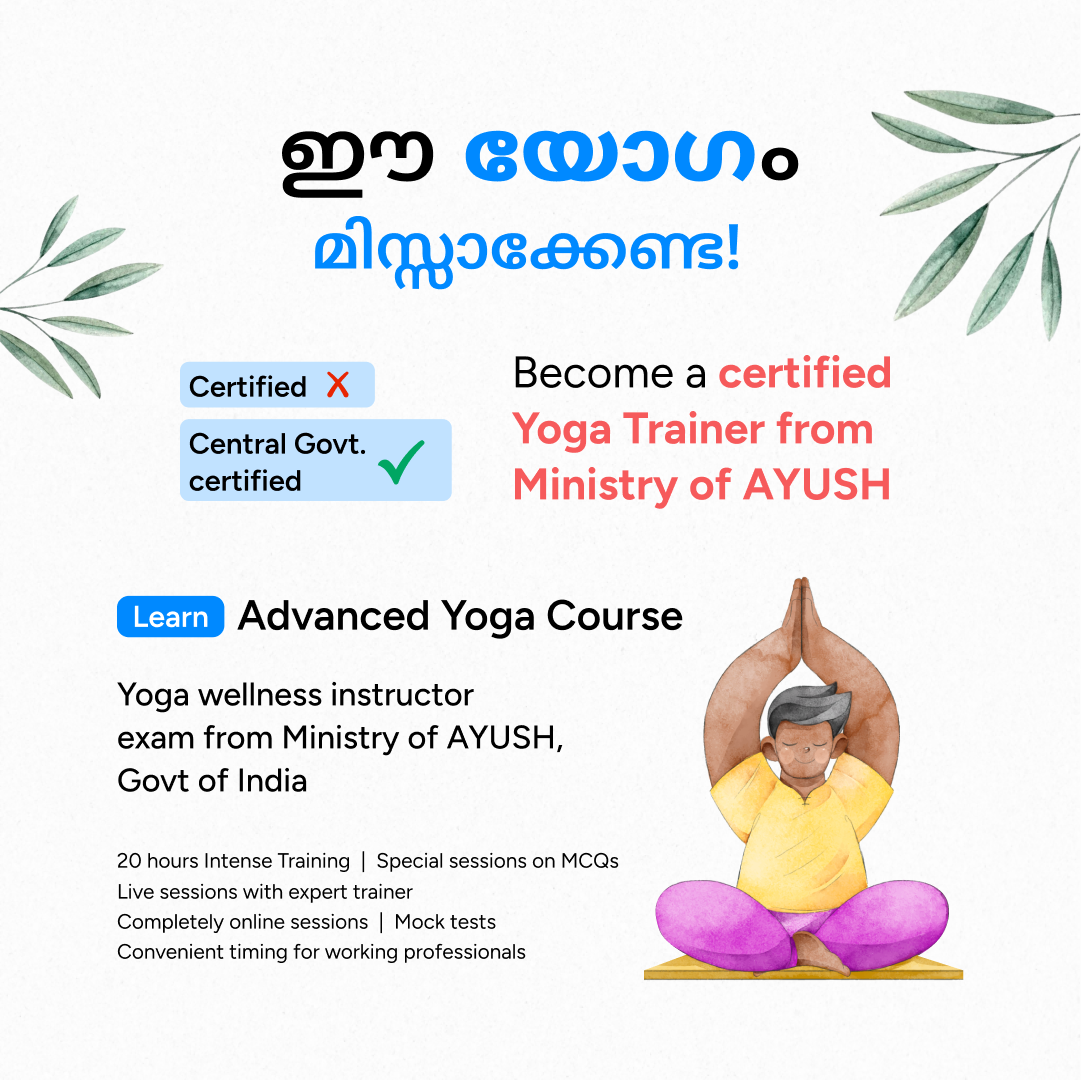Table of Contents
Sitting asanas are the unsung heroes of a calming yoga practice. When life gets loud, long commutes, tight deadlines, and family demands, a short sequence of seated postures paired with conscious breathing can reset your nervous system faster than a cup of tea. For aspiring yoga teachers and everyday practitioners in India, sitting asanas are easy to teach, simple to practise anywhere and profoundly effective for stress relief and emotional regulation.
This long-form guide explains why seated poses relax the body and mind, which sitting asanas work best, exact step-by-step instructions (with modifications), breath and pranayama pairings, sequencing and class plans, contraindications and how to align this teaching into a mindful class. I’ll also show how an accredited Yoga Teacher Training Course helps you convert these practices into safe, impactful teaching.
Get Confident! Join Our Yoga Teacher Training Course!
Why are sitting asanas so good for relaxation
Sitting asanas are good for stress relief for three simple reasons:
- Low physical demand: They don’t require high cardiovascular output or complex balance so the nervous system can down-regulate more easily.
- Posture supports respiration: A stable sitting base lets you open the chest and breathe diaphragmatically which shifts the autonomic nervous system from fight/flight to rest/digest.
- Accessible anywhere: A chair, cushion or mat is enough. That means consistent practice is realistic for busy people.
Physiologically, gentle extension in the upper back, diaphragmatic breathing and relaxed jaw/face reduces sympathetic tone (adrenal activation) and increases vagal tone, the body’s natural brake. Psychologically, seated mindfulness and focused breathing improves attention control and interrupts rumination loops.
Core sitting asanas for relaxation: what to practise and why
1: Which of these is the primary goal of yoga practice?
Below are the most useful sitting asanas for calming the nervous system. Each of these poses has benefits, step by step entry, common alignment notes and some variations for beginners and teachers to make the most out of them.
1. Sukhasana – Easy Cross-Legged Pose (The Calming Foundation)
Sukhasana’s simplicity makes it perfect for breathwork and meditation. Sukhasana grounds the pelvis and helps you breathe with your diaphragm.It’s one of the best techniques for relaxation
How to do it:
- Sit down on a folded blanket or a cushion.
- Cross your shins over each other – and if you can, try to keep your knees lower than your hips.
- Sit up straight with your tailbone slightly tucked in, chest open and shoulders relaxed.
- You can rest your hands on your knees or lap, with your palms either up or down.
- Close your eyes, and breathe slowly for 3 to 10 minutes.
Variations for beginners and more: If your knees lift up a bit, you can try sitting on a higher cushion. If you’re feeling tight in your hips, you can try sitting up against a wall.
2. Vajrasana – Thunderbolt / Hero Pose (Digestive Calm)
Vajrasana promotes parasympathetic activation, and in many traditions it’s used after meals – it’s great for grounding your attention and calming your nervous system.
How to do it:
- Get down on your hands and knees and then sit back onto your heels. Your toes might touch, or you might cross them.
- Keep your spine straight and breathe deeply into your lower ribs.
- Let your hands rest on your thighs, and try to relax your jaw and facial muscles.
Modifications for those with sensitive knees or issues: If you find that kneeling on the floor is uncomfortable, try placing a folded blanket between your calves and thighs. Alternatively, you can practice this pose while seated on a chair and just mimic the breathing pattern.
3. Sukhasana with Forward Fold (The Gentle Release)
This seated forward bend, which is a variation on Uttanasana, helps to calm the nervous system by putting your head below your heart – a signal that it’s time to rest.
How to do it:
- Start in Sukhasana, then inhale and lengthen your spine – and as you exhale, fold forward from the hips.
- You can rest your forehead against a block or your knees, and let your arms relax.
- Take 5 to 10 deep breaths in this position.
One thing to be aware of: If you have glaucoma or uncontrolled high blood pressure, then you may need to steer clear of this pose.
4. Baddha Konasana – Bound Angle Pose (Opening your hips & Grounding)
This pose opens up your groins gently, improves circulation in your pelvic area and even sooths anxiety when you practice it with slow, deep breaths.
How to do it:
- Sit tall, with your soles together and your knees dropping to the sides.
- Hold onto your feet or ankles, and as you breathe in, try to lengthen your spine and expand your chest.
- If you want to go deeper, you can fold forward from your hips – keeping your chest broad.
Some modifications to keep in mind: If you’re feeling a bit uncomfortable, try sitting on a cushion – or you can place some blocks under your knees for support.
5. Janu Sirsasana – Head-to-Knee Forward Bend (Getting introspective)
This pose involves a gentle stretch on one side of the body, which can help balance out the nervous system, calm the mind and even balance out the body’s energy.
How to do it:
- Start by sitting up straight, then extend one leg out in front of you and bend the other knee, so that the foot comes to rest against the inner thigh of the leg that’s extended.
- Inhale to lengthen your spine, and as you exhale, fold over the straight leg.
- Hold for 5 to 8 breaths, then switch sides.
If your hamstrings are tight: You can use a strap around the foot to help you get into this pose.
6. Ardha Matsyendrasana (Seated Twist) detox & nervous reset
Why it helps: Twists stimulate abdominal organs, support digestion, and provide a restful rotation that often eases back tension. Slow twists are calming when coordinated with the exhale.
How to do it:
- Sit tall, bend right knee and cross over the left, place right foot by left knee.
- Inhale lengthen, exhale twist to the right, left hand on outside knee, right hand behind you.
- Keep breathing slowly; avoid forcing the twist.
Caution: Avoid deep twists during late pregnancy or recent abdominal surgery.
7. Seated Forward Fold with Support (Paschimottanasana variant)
Why it helps: Classic calming fold; supported version is deeply restorative and ideal for stress relief.
How to do it:
- Sit with legs extended, sit on a cushion if needed.
- Hinge forward and rest torso on bolster or stack of blankets; arms relaxed.
- Breathe slowly for 3–6 minutes.
Modifications: Bend knees slightly to reduce hamstring pull.
8. Sukhasana with Shoulder Opener & Child’s Pose transitions
Combine seated shoulder opening (interlace hands behind the back and lift gently) with Child’s Pose transitions to alternate calming heart opening and grounding rest.
Become a Certified Yoga Instructor
Yoga Teacher Training Course by Entri App: Master authentic yoga techniques, earn certification, and build a successful career as a professional yoga instructor.
Join Now!Breath & pranayama pairings
Sitting asanas become potent for stress relief when paired with specific breath practices. Teach these after the poses or integrate them in-pose.
1. Diaphragmatic breathing (basic)
- Inhale to a slow count of 4, expanding the lower ribs.
- Exhale to a count of 6–8, allowing full belly deflation.
- Repeat 6–10 rounds.
Effect: Lowers heart rate, increases vagal tone.
2. Nadi Shodhana (Alternate Nostril Breathing)
- Use right thumb to close right nostril; inhale left, switch, exhale right; inhale right, switch, exhale left.
- 5–8 cycles calm the nervous system and improve focus.
3. Sama Vritti (Equal Breathing)
- Inhale 4, exhale 4 for beginners and workplaces.
- Maintain for 5–10 minutes to steady the mind.
4. Ujjayi (Ocean breath) for moderate calming during seated flows
- Slight constriction at the back of the throat; slow inhales and exhales; useful in longer holds for warmth and focus.
Pair pranayama with a grounded seat like Vajrasana or Sukhasana. Always teach breath practices steadily, starting with short durations and building gradually.
Practical sequencing for yoga teachers
- Welcome & intention (5 min): Invite students to notice breath; set intention for relaxation.
- Warm-up (10 min): Seated cat-cow, shoulder rolls, gentle side bends.
- Pranayama (7 min): Diaphragmatic breathing + 2 rounds Nadi Shodhana.
- Main asana block (25 min):
- Baddha Konasana (3 min) → forward fold (2 min)
- Janu Sirsasana R/L (4 min each)
- Seated twist (both sides, 3 min)
- Sukhasana forward fold (3 min)
- Baddha Konasana (3 min) → forward fold (2 min)
- Integration (6 min): Seated shoulder opener + chest softening.
- Restorative close (7–10 min): Reclined legs-up or Savasana with guided body scan.
- Close (1–2 min): Gratitude, smile, and bell or soft chime.
Encourage students to journal one sentence about how they feel after class increases self-awareness and retention.
Building habit: 6-week plan for everyday calm
- Weeks 1–2: Daily 5–10 minute seated breath and Sukhasana practice.
- Weeks 3–4: Add Baddha Konasana + short forward fold (3× week).
- Weeks 5–6: Integrate Nadi Shodhana and 15-minute evening unwind twice a week.
Track stress levels and sleep quality weekly; small consistent practices beat sporadic long sessions.
Become a Certified Yoga Instructor
Yoga Teacher Training Course by Entri App: Master authentic yoga techniques, earn certification, and build a successful career as a professional yoga instructor.
Join Now!How Entri’s Yoga TTC course supports teaching sitting asana classes
If you want to teach this work professionally, training helps translate practice into safe, ethical teaching. A good Yoga Teacher Training Course covers:
- Functional anatomy of the breath and pelvis.
- Progressive sequencing for nervous-system regulation.
- Cueing language, hands-on adjustments and trauma-sensitive teaching.
- Practical lesson planning and class management.
Entri’s Yoga TTC course trains teachers in these areas so you can design accessible sitting-asana classes that truly help students manage stress.
Key takeaways:
- Sitting asanas are powerful, accessible tools for stress relief and relaxation.
- Pair poses with diaphragmatic breathing and simple pranayama to maximise calming effects.
- Use props to make poses accessible; chair practices are valid and effective.
- Sequence warm-up → breath → main poses → restorative close for best outcomes.
- Teach short, simple cues and offer one useful modification per pose.
- Build a habit with short daily practices and deepen it with a structured 6-week plan.
- For teachers, formal training such as a Yoga TTC equips you to teach safely and effectively.
Final thoughts
In a world of constant motion and distraction, sitting asanas remind us of stillness. They teach us how to rest without sleeping, to find calm in the chaos. Practicing these gentle seated postures releases physical tension, soothes the nervous system, and connects us to ourselves.
Whether you’re a beginner looking for relaxation or an aspiring yoga teacher wanting to deepen your understanding, seated yoga poses can change your perspective on rest and mindfulness.
With regular practice and proper guidance like the Entri Yoga TTC Course, you can cultivate peace, resilience and be able to bring balance to your life and the lives of others.
Sit, breathe, and let yoga guide you to calm and clarity. Your body and mind will thank you.
Become a Certified Yoga Instructor
Yoga Teacher Training Course by Entri App: Master authentic yoga techniques, earn certification, and build a successful career as a professional yoga instructor.
Join Now!Frequently Asked Questions
What are sitting asanas in yoga?
Sitting asanas are yoga postures performed while seated on the floor or a cushion. They help improve posture, enhance breathing, and promote relaxation by grounding the body and calming the mind.
Which sitting asanas are best for stress relief?
Some of the best sitting asanas for stress relief include Sukhasana (Easy Pose), Vajrasana (Thunderbolt Pose), Baddha Konasana (Bound Angle Pose), and Janu Sirsasana (Head-to-Knee Pose).
How do sitting asanas help with relaxation?
Sitting asanas calm the nervous system, improve oxygen flow through diaphragmatic breathing, and help release physical and mental tension by creating stillness and awareness.
Can sitting asanas be practised daily?
Yes, sitting asanas are gentle and safe for daily practice. Even 10–15 minutes of seated yoga can reduce stress, anxiety, and fatigue effectively.
Are sitting asanas suitable for beginners?
Absolutely. Most sitting asanas, like Sukhasana and Vajrasana, are beginner-friendly. Props like cushions or bolsters can be used to make them more comfortable.
What is the best time to practice sitting asanas?
The best times are early morning for mental clarity or evening for relaxation. However, short sessions can also be done during work breaks or before bed.
Can sitting yoga poses improve focus and productivity?
Yes. Sitting asanas combined with mindful breathing enhance focus, improve mood, and reduce mental fatigue, making them excellent for students and professionals alike.
How can Entri’s Yoga TTC course help aspiring yoga teachers?
The Entri Yoga TTC Course teaches anatomy, safe sequencing, and the science behind asanas and pranayama. It equips aspiring yoga teachers with the confidence to teach calming, restorative seated yoga classes effectively.

























